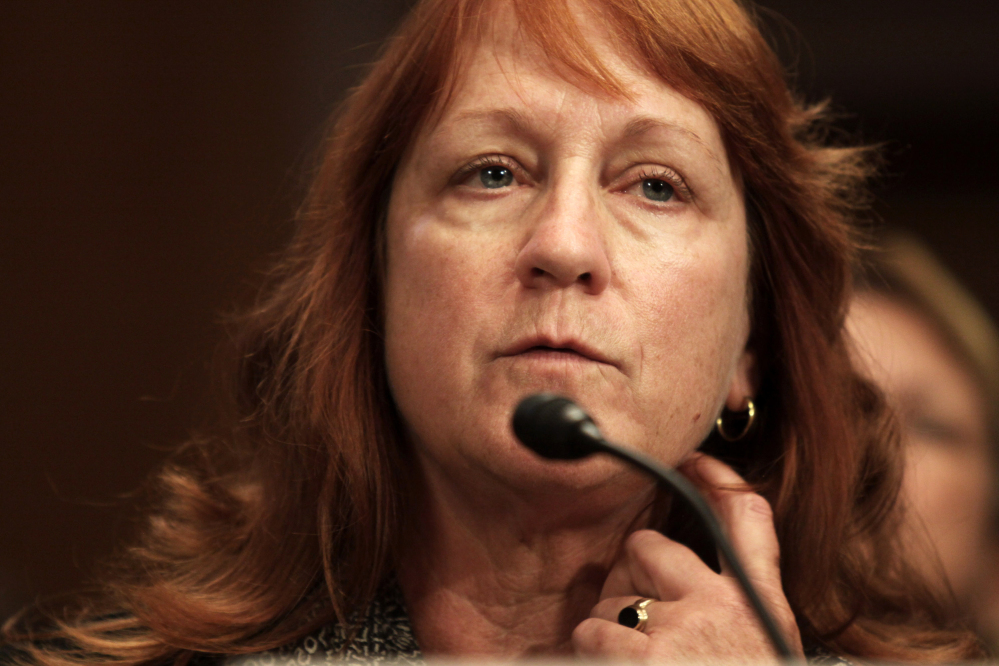WASHINGTON — Rosemary Anderson could be 81 by the time she pays off her student loans. After struggling with divorce, health problems and an underwater home mortgage, the 57-year-old anticipates there could come a day when her Social Security benefits will be docked to make the payments.
Like Anderson, a growing percentage of aging Americans struggle to pay back their student debt. Tens of thousands of them even see their Social Security benefits garnished when they can’t do so.
Among Americans ages 65 to 74, 4 percent carried federal student loan debt in 2010, up from 1 percent six years earlier, according to a Government Accountability Office report released Wednesday at a Senate Aging Committee hearing. For all seniors, the collective amount of student loan debt grew from about $2.8 billion in 2005 to about $18.2 billion last year.
“Some may think of student loan debt as just a young person’s problem,” said Sen. Bill Nelson, D-Fla., chairman of the committee. “Well, as it turns out, that’s increasingly not the case.”
Anderson, of Watsonville, California, amassed $64,000 in student loans, beginning in her 30s, as she worked toward her undergraduate and graduate degrees. She said she has worked multiple jobs – she’s now at the University of California, Santa Cruz – to pay off credit card debt and has renegotiated terms of her home mortgage, but hasn’t been able to make a student loan payment in eight years. The amount she now owes has ballooned to $126,000.
“I find it very ironic that I incurred this debt as a way to improve my life, and yet I still sit here today because the debt has become my undoing,” Anderson testified.
Despite not making payments, she’s managed to keep the education debt in good standing by getting permission to defer the payments even as the amount she owes has grown, she said.
Ed Boltz, a bankruptcy attorney in Durham, North Carolina, who is president of the National Association of Consumer Bankruptcy Attorneys, said in an interview that many of the seniors he sees with student loan debt are also struggling with challenges such as medical problems, job loss or divorce. Some, he said, went back to school with hopes of making a higher salary and that didn’t pan out, or the children they helped fund to attend school are not in a position to help the parent in return.
“They are stuck with these debts and they can’t try again,” Boltz said. “There’s no second act for them.”
The GAO found that about 80 percent of the student loan debt by seniors was for their own education, while the rest was taken out for their children or other dependents.
The GAO found that about a quarter of loans held by seniors ages 65 to 74 were in default. The number of older Americans who had their Social Security benefits offset to pay student loan debt increased about fivefold, from 31,000 to 155,000, from 2002 to 2013.
“As the baby boomers continue to move into retirement, the number of older Americans with defaulted loans will only continue to increase,” the GAO said. “This creates the potential for an unpleasant surprise for some, as their benefits are offset and they face the possibility of a less secure retirement.”
Send questions/comments to the editors.



Success. Please wait for the page to reload. If the page does not reload within 5 seconds, please refresh the page.
Enter your email and password to access comments.
Hi, to comment on stories you must . This profile is in addition to your subscription and website login.
Already have a commenting profile? .
Invalid username/password.
Please check your email to confirm and complete your registration.
Only subscribers are eligible to post comments. Please subscribe or login first for digital access. Here’s why.
Use the form below to reset your password. When you've submitted your account email, we will send an email with a reset code.